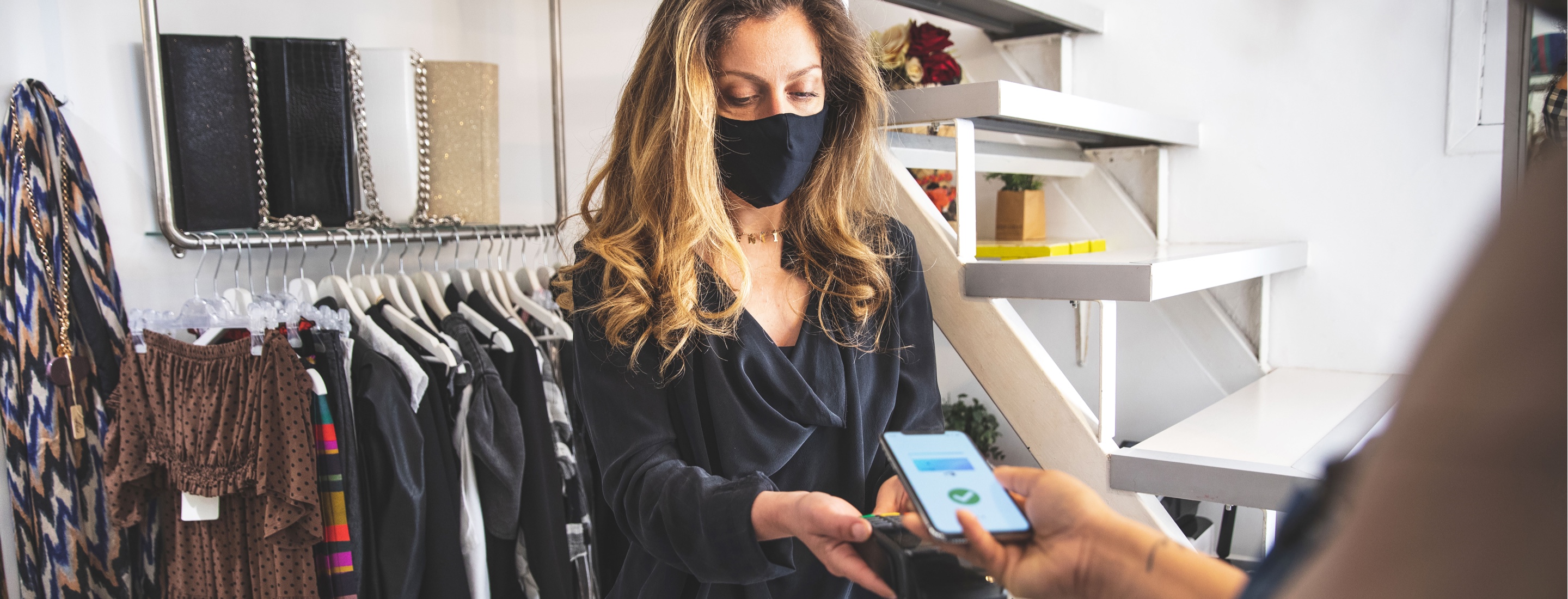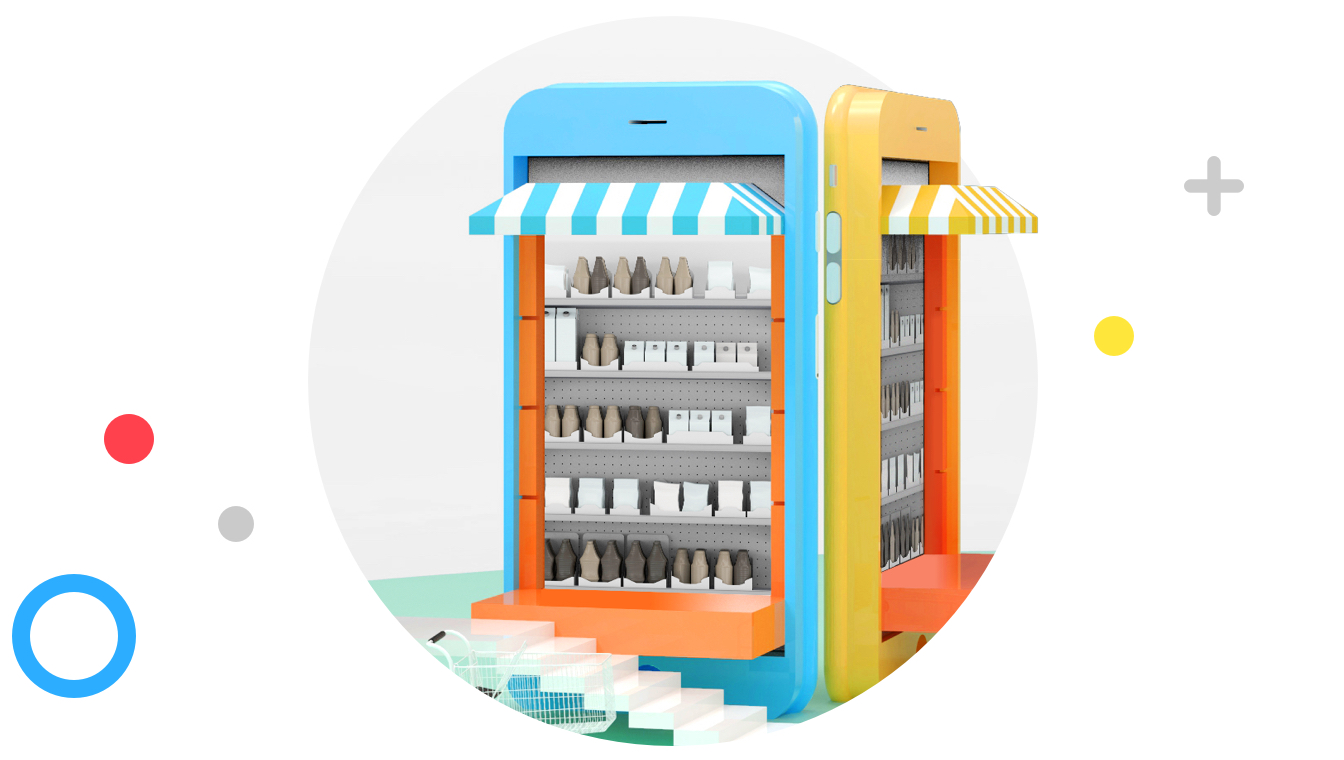Increase ease and speed of in-store shopping
Big-box retailers and large grocers often operate within a low-touch model—meaning that customers do not require much time or attention from employees. Instead, shoppers typically browse products and pay quickly at a cashier point or self-checkout with minimal human interaction.
However, these experiences will change. Shoppers may feel less inclined to handle products that others may have touched, more floor space will be needed to direct traffic for social distancing and customers and staff will want more contactless payment options to minimize physical interaction. In turn, low-touch shopping will move toward “no-touch,” with technology connecting digital and physical experiences in several ways:
Contactless Payment
Future of point-of-sale (POS) systems will evolve from physical registers and toward POS actions pushed to a customer's mobile phone, reducing contact, traditional queueing and physical in-store checkout. For example, Walmart Canada’s Fast Lane program integrates scan-and-go technology within their My Walmart app, allowing customers to build shopping lists, find items in-store and check out at a dedicated kiosk all through a mobile device.
Click-and-Collect & Curbside Fulfillment
With click-and-collect, shoppers get the convenience and safety of browsing and purchasing products online, with assurance that goods will be there when they arrive in-store. It also keeps products off the shop floor while reducing last-mile costs associated with in-store picking and home delivery.
Digital Store Layouts
Digital stone layouts, or planograms, can help shoppers navigate physical stores by helping them find exactly where an item is on the floor, minimizing shopping time. According to Van De Schootbrugge, “once you understand that you have certain hotspots in store or certain areas where people spend more time, you can start looking at rearranging product to accommodate for more capacity.” By understanding individual shopper habits, retailers can add to the experience by providing personalized product information, deals, or in-app promotions based on their preferences.
Augmented Reality
For some retailers, augmented reality can create safer in-store environments that recreate physical experiences. For example, digital mirrors can give shoppers an opportunity to virtually “try on” clothing or sample makeup using a selfie – reducing risk of costly returns that stem from dissatisfying purchases. In another example, IKEA’s online planning tools give shoppers an opportunity to build their own virtual room before heading to the store, allowing consumers to feel more confident about their next purchase.
A new in-store experience
COVID-19 fundamentally changed the way people shop, giving rise to new shopping habits that may remain consistent over time. Though the pandemic presented retailers with unprecedented challenges, a holistic approach to recovery can turn into a huge opportunity to elevate sales and create safer, more convenient in-store experiences.
-- Srinivas Devulapalli, Managing Director, EMEA, contributed to this article











